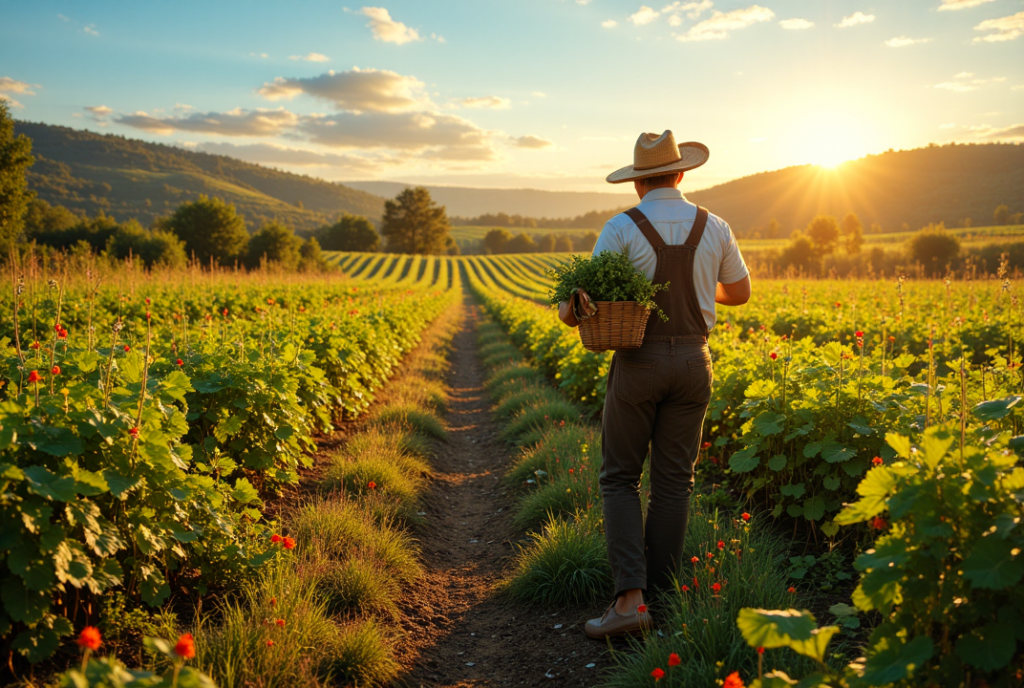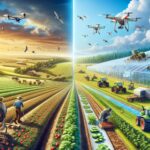The Quiet Revolution of Regenerative Farming: A Path Toward Healing the Earth
In recent years, there’s been a growing conversation around the future of our planet’s agriculture. While traditional farming methods have served us for generations, the pressures of climate change, soil degradation, and dwindling biodiversity have pushed many to reconsider how we cultivate our food. Enter regenerative farming — a hopeful and innovative approach that seeks not only to sustain the land but to heal it.
Regenerative farming is more than just a technique; it’s a philosophy rooted in restoring balance to ecosystems, increasing biodiversity, and building healthy soils. But unlike some radical shifts in farming, regenerative practices don’t ask us to completely reinvent the wheel. Instead, they offer a calm and thoughtful return to nature’s rhythms — and in doing so, show us how farming can be both productive and restorative.

What Is Regenerative Farming?
At its core, regenerative farming is an approach that emphasizes working with nature, rather than against it. It builds on the understanding that healthy soil is the foundation of a thriving ecosystem. By focusing on soil health, farmers can create systems that promote biodiversity, store carbon, and improve water retention, all while producing nutritious food.
A key difference between regenerative farming and conventional methods is that regenerative practices are designed to improve the land over time. Where industrial agriculture often depletes the soil, regenerative farming seeks to regenerate it, improving its quality for future generations.
Key Principles of Regenerative Farming
- Soil Health Comes First
Healthy soil is rich in organic matter and teeming with life, from beneficial bacteria to earthworms. Farmers use techniques such as cover cropping, crop rotation, and reduced tillage to protect and build this life. The result? Soils that are better able to retain water, support plant growth, and sequester carbon. - Biodiversity is Key
In regenerative farming, diversity is embraced at every level. From planting a variety of crops to integrating livestock into farming systems, diversity helps to balance ecosystems and make farms more resilient. This also includes encouraging the return of natural wildlife, such as bees and birds, which help pollinate crops and control pests. - Minimizing External Inputs
Regenerative farmers aim to reduce their reliance on synthetic fertilizers, pesticides, and herbicides. Instead, they focus on building natural fertility through composting, cover crops, and integrating livestock into their systems. The result is a more self-sustaining farm that reduces pollution and dependency on chemical inputs. - Capturing and Storing Carbon
One of the most promising aspects of regenerative farming is its potential to act as a climate solution. By increasing organic matter in soils, farms can store more carbon underground. This not only improves soil health but also helps mitigate the effects of climate change by removing carbon dioxide from the atmosphere. - Holistic Land Management
Regenerative farming encourages thinking about the farm as an entire ecosystem. Rather than focusing solely on crop yields, farmers consider the health of the soil, water cycles, and biodiversity. Livestock, too, are rotated through fields in a way that mimics natural grazing patterns, which can help regenerate the land by fertilizing it naturally.
Why Regenerative Farming Matters Now
As our planet faces more extreme weather patterns, from prolonged droughts to intense storms, traditional farming methods are often ill-equipped to handle these changes. Regenerative farming, on the other hand, builds resilience into the system. Farms that focus on soil health and biodiversity are better able to withstand these challenges, making them more adaptable in a changing climate.
Moreover, the promise of carbon sequestration offers a glimmer of hope in the global effort to curb climate change. While reducing emissions is crucial, finding ways to remove carbon from the atmosphere is equally important, and regenerative farming offers a practical, scalable solution.
A Gentle Path Forward
The transition to regenerative farming is a gentle one. It’s not about forcing farmers to adopt brand new technologies or abandoning centuries of agricultural knowledge. Rather, it’s about rethinking how we interact with the land and listening to the wisdom nature has always offered.
Many farmers who have adopted regenerative practices report not only better yields but also a renewed sense of connection to their land. By working in harmony with natural systems, they find that their farms are not only more productive but also more fulfilling to manage. There’s something deeply satisfying about seeing life return to the soil, the bees buzz among the wildflowers, and the crops flourish without the need for synthetic chemicals.
The Future of Regenerative Farming
As more consumers become aware of the environmental impacts of industrial agriculture, demand for regeneratively produced food is growing. Farmers’ markets, grocery stores, and even major food brands are starting to highlight regenerative products, giving consumers a chance to support this quiet revolution with their choices.
The journey toward widespread regenerative farming won’t happen overnight, but it doesn’t need to. Like the slow and steady work of building healthy soil, regenerative agriculture is about progress over perfection. Every step in this direction, no matter how small, brings us closer to a future where farming can heal the earth rather than deplete it.
In the end, regenerative farming offers a hopeful vision — one in which farms are not just sites of production but vibrant ecosystems, teeming with life and possibility. It reminds us that farming doesn’t have to be a battle against nature. Instead, it can be a partnership, where both the land and the farmer thrive.
Conclusion
Regenerative farming is quietly transforming the way we think about agriculture, offering a path that is both sustainable and restorative. By focusing on healthy soil, biodiversity, and holistic management, it provides a solution that works with nature to address the challenges of today and tomorrow. In a world where we often hear about environmental doom and gloom, regenerative farming offers a refreshing and calm message of hope — that we can heal the land, one farm at a time.



